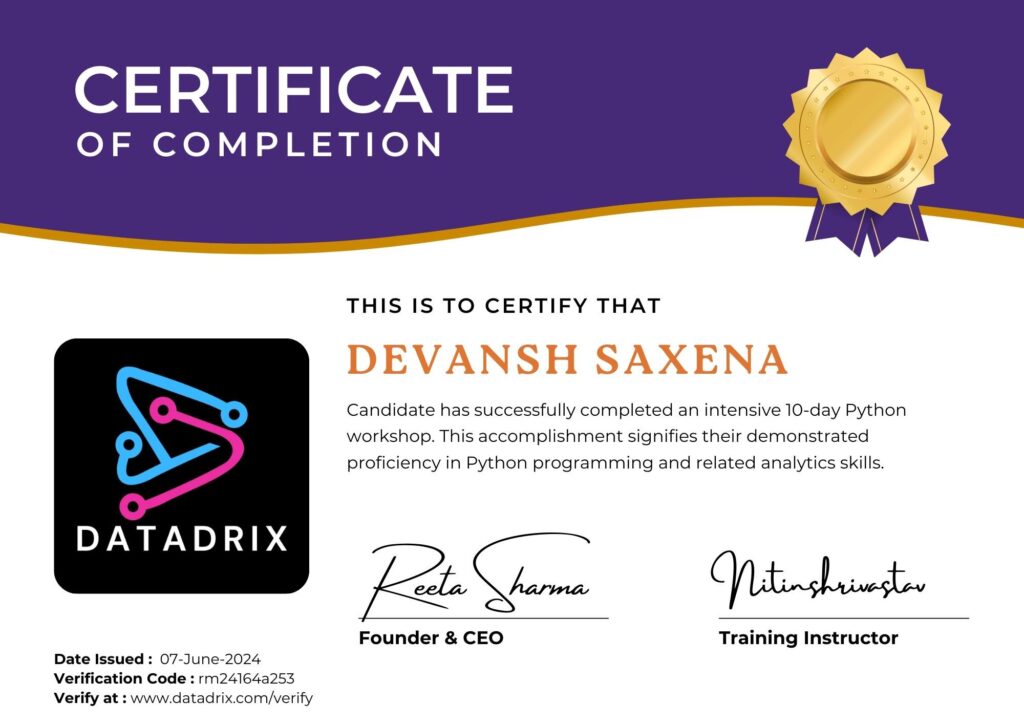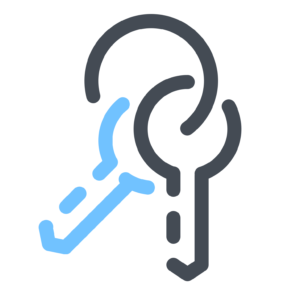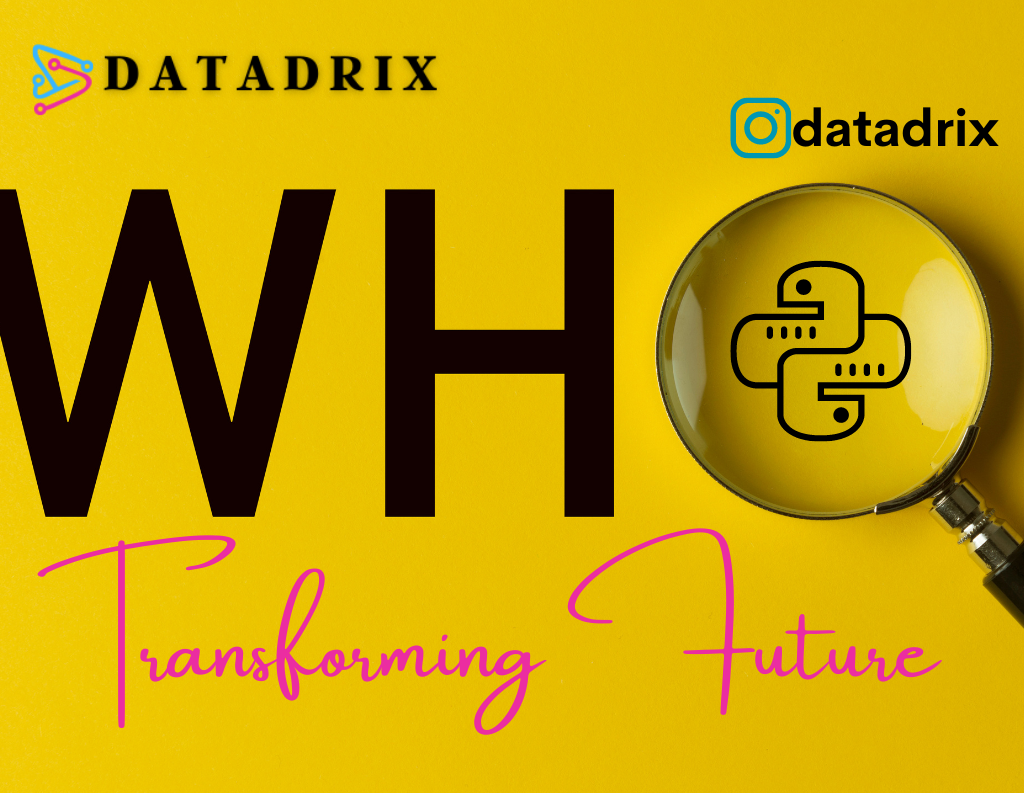

DATADRIX : Python Programming
Unlocking the Power of Programming with Python
Discover the boundless potential of Best Python Training in delhi through our comprehensive course. Python, known for its simplicity and versatility, is a programming language that opens doors to endless possibilities. In our program, you’ll embark on a journey to grasp the fundamental concepts of Python, equipping yourself with a solid foundation. With hands-on projects and real-world applications, you’ll develop practical skills that empower you to create solutions for a wide range of challenges. Whether you’re a novice or experienced programmer, our course is designed to accommodate learners at all levels. Python’s elegant syntax and vast library ecosystem make it a powerful tool for web development, data analysis, artificial intelligence, and more.
Course Curriculum
A syllabus is a meticulously crafted document that serves as a comprehensive roadmap for the training program. It plays a pivotal role in guiding candidate along their learning journey, offering a structured framework for acquiring knowledge and honing skills.
Module 1
Module 2
Module 3
Module 4
Internship Program
This internship is a part of the course curriculum to help you gain real experience in the Data Science domain.During this internship, you will go through various challenges which you allow to explore new skills and push your limits while learning something new during the projects.
Topics Covered :
Integration with python & SQL
Web Scrapping
Data Cleaning with Python
Use Cases
Git / Github Integration
End to End Projects
Interview Preparation
Datadrix offers top-notch placement opportunities. With strong industry ties and modern training, we excel in placing our candidates. Our results speak to our commitment to shaping successful careers. Our approach ensures to open pathway for learners to achieve good growth in the domain
Activities Covered :
Interview Pattern Preparation
Mock Interview Practice Sessions
Placement Ready Session for Working Professionals
Preparation as per Job Description
Technical Screening for technical strengthening
Screening for effective communication check
Duration
Our 80+ hour Python course provides in-depth training and hands-on experience, covering basic to advanced programming, and preparing you for success in the tech-driven world.
Weekly Assesments
Weekly assessments, including quizzes and coding exercises, reinforce Python concepts and ensure comprehensive readiness for advanced programming topics.
In-depth Explaination
Python training covers core and advanced concepts through hands-on projects, ensuring a thorough understanding of Python’s capabilities and best practices.
Doubt Session
Doubt sessions offer students personalized guidance to address questions and challenges, ensuring a clear understanding of the course material and concepts.
Certification
Upon course completion, participants receive a certification that acknowledges their Python proficiency and understanding of core concepts and practical skills.
An Awesome Community
Our students, instructors and mentors come from different colleges, companies, and walks of life.
Meet our team and students

Joining DATADRIX means you’ll create an amazing network, make new connections,
and leverage diverse opportunities.

“Validate Your Expertise and Propel Your Career”
Key Features & Benefits

Frequently Asked Questions

Who can make career transition into Python ?
Graduate or working professional with a passion for technology & desire to broaden their skillset can transition into a Python career.

What are the key features of Python ?
Offering clear and concise syntax that emphasizes readability. Additionally, its versatile because its library & community support.

Best Python Training in Delhi – DATADRIX
Python training at the leading institute in Delhi. Hands-on projects & 100% job assistance ensure successful Python journey.

Duration and scope of python language
Friendly syntax, allows quick proficiency, making it an ideal to learn in a short duration. Vast scope in the tech industry.















